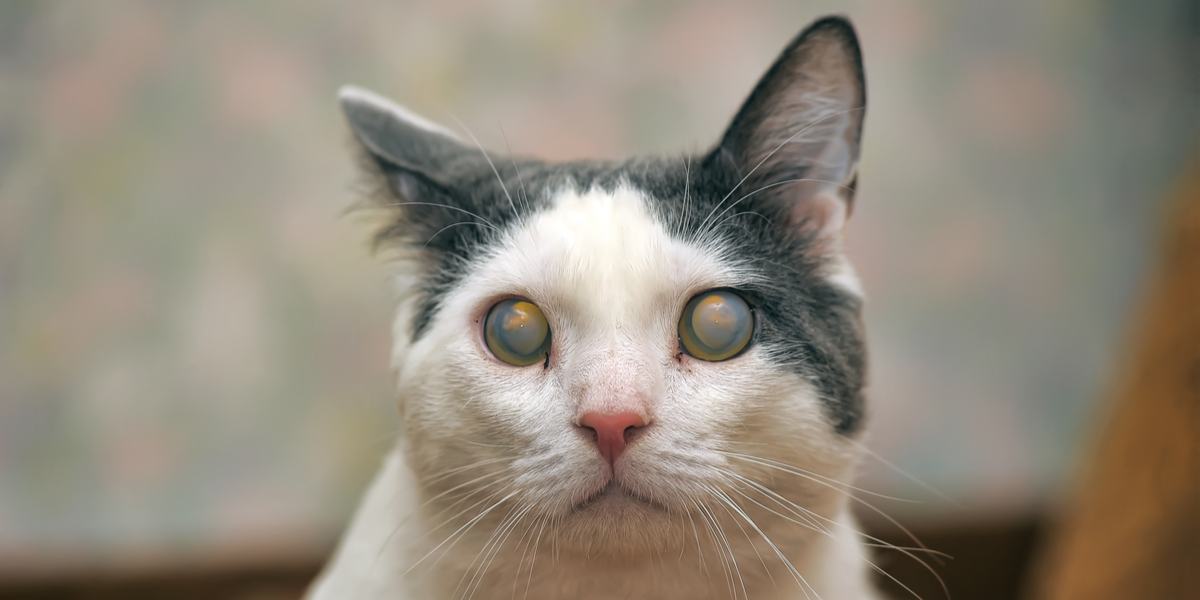
Night hunting, pouncing on speedy prey, keeping a watch to protect their territory—cats use their keen eyesight for survival in the wild and to live an active life as a pet in the home.
If a cat’s eyesight is affected or reduced, it can lead to changes in behavior and sometimes pain and discomfort. Cats are excellent at hiding signs of disease, and it is important to watch for and address concerns quickly for the best outcome.
When the eye is involved, it is even more urgent because this sensitive organ can change rapidly, sometimes resulting in complete loss of vision. Cataracts can often be treated in pets, and there are signs and symptoms you can watch for in your feline friend that will allow you to catch issues early.
Quick Overview: Cataracts In Cats






What Are Cataracts?
A cataract is an opacity, or area that you cannot see through, in the lens of the eye. The lens is like a clear balloon filled with a jelly-like protein. The lens allows light to pass through and be focused and produce images on the retina.
If a hard, thick area forms—a cataract—the light cannot pass through the lens normally and vision can be reduced. Cataracts can range from small and mild, not affecting quality of life or vision significantly, to severe, causing pain, inflammation, and loss of vision.
Thankfully, if we intervene early and treat the eye disease and the cataract, we can help our cats continue a healthy lifestyle.
How Common Are Cataracts in Cats?
Primary cataracts are not very common in cats. Primary cataracts are present at birth or due to genetics. The breeds of cats that have been reported to be associated with cataracts include Persian, Birman, Himalayan, and British Shorthair.
If you are thinking of having one of these breeds, be sure to ask the breeder about any cataract or other genetic disease history. These cases often progress very slowly and do not need medical or surgical intervention. However, regular exams and evaluation by a veterinarian will allow monitoring of the eye for any changes.
Types of Cataracts in Cats
The most common type of cataracts in cats are secondary cataracts or cataracts caused by another condition.
Cats love to chase things, some pick fights with other cats, and, as we have all seen, get in precarious situations. This can result in a puncture or injury to the eye. Sometimes, even after the outside injury has healed, inflammation can occur within the eye and lead to cataract formation.
Uveitis, or inflammation within the front or back chambers of the eye, can trigger cataract formation. In addition to trauma, uveitis can be caused by certain parasitic infections, toxins, nutritional deficiencies and cancer. Treating the underlying cause of uveitis is the priority, but the cataract may remain and require additional treatment, too.
Mature and hypermature cataracts occur when the cataract grows and takes over the entire lens, blocking vision. In these cases, the lens itself can induce uveitis, by the outer shell of the lens cracking. In some cases, the lens will break loose from the fibers that hold in place and fall into the front or back chamber of the eye. These cases need to be seen and treated immediately by a veterinarian.
Detecting Cataracts in Cats
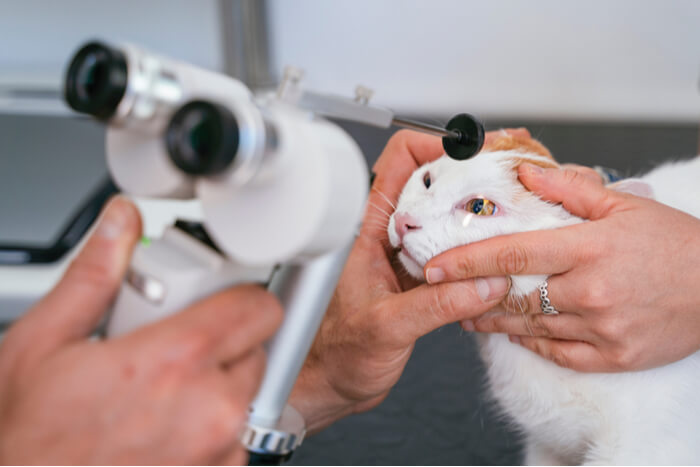
While there are symptoms you can identify at home, your veterinarian can use special equipment to diagnose cataracts.
Cataracts can be difficult to detect at home, as the veterinarian uses a special light to be able to diagnose and see cataracts in pets. However, there are some signs that may appear in your cat if they have cataracts.
If your feline friend is vocalizing more at night or missing jumps that they could previously make, it may be a sign that their vision is compromised. You may be able to see a cloudiness or dark spot in the center of their eye when the light hits just right.
Finally, some of the causes of cataracts can be seen as simply eye trouble. Redness, squinting, excessive tearing, green or yellow discharge from the eye, bulging of the eye, or the third eyelid (the small piece of tissue on the lower corner of the eye that pets have) being elevated are all signs to take your cat into the veterinarian immediately.
How Cataracts Are Identified in Cats?
Part of determining the cause of eye problems is looking at your entire pet. A full physical exam and often laboratory tests will be performed to identify any underlying diseases. When your veterinarian does an eye exam, they will use a special light and magnifier, called an ophthalmoscope.
They will often do tests like numb the surface of the eye and use a special stain to see if there are any scratches to the cornea, or outer surface. They may also check the tear production to ensure the eye is not excessively dry.
Finally, the vet may check the pressure eye using a special tool called a tonometer. All of these tests give them pieces of the puzzle to help determine the health of the eye, the comfort of your pet, and the problem with the eye.
Treating Cataracts in Cats
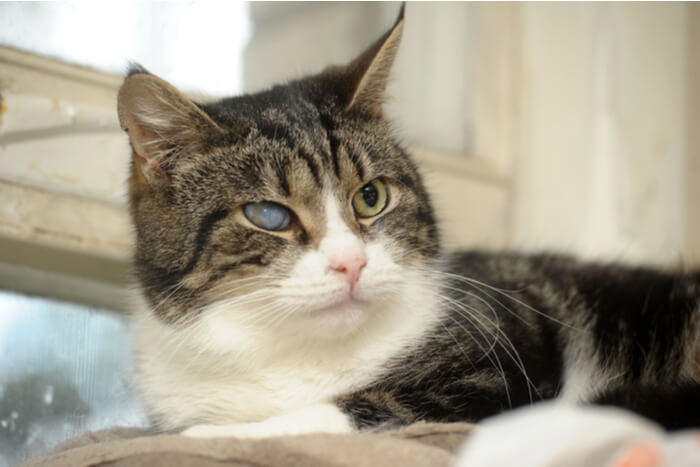
Cataracts occur when an opaque area develops in the lens of the eye. When the jelly-like protein of the eye’s lens hardens and thickens, light cannot pass through, reducing vision and changing the appearance of the eye.
If your cat has a cataract, your general practice veterinarian may refer you to a specialist, a veterinary ophthalmologist. The veterinary ophthalmologist can recommend treatments and medications for more advanced or complicated cases, as well as perform surgery if needed.
There are not currently any medications that can be given or applied to prevent or treat cataracts specifically, but eye drops or oral medications may be used to treat underlying diseases. The eye is challenging to treat because of the different blood supply and type of tissue.
Your veterinary team will first make sure any underlying, or causative conditions, are resolved first. In some cases, surgical removal is an option, similar to people that develop cataracts, and can provide a permanent solution.
If the veterinary ophthalmologist determines your pet is a candidate, the surgery involves anesthesia, then using very specialized instruments, a small incision is made in the eye and in the capsule, or outer layer of the lens.
The material that makes up the lens is removed, which removes the cataract as well (lensectomy via phacoemulsification). A synthetic lens material is then put back in. Your cat’s case may not be a good fit for surgery, but your feline’s quality of life is the top priority.
Medications may be prescribed and you will be educated on what to watch for at home. Eye diseases and cases can change rapidly, so careful monitoring and medical progress exams are key.
In rare cases, cataracts without other eye disease can be resorbed, restoring eyesight. But each case is different, so veterinary care and advice can make sure your cat is comfortable.
Treating eye diseases requires specialized care and can be expensive, so having pet insurance is a great investment for you and your pet.
Cataract surgery in pets can range from $1800 for one eye to several thousand for complicated cases. Our cats bring us comfort and companionship, and we want them to live long, healthy lives with us.
If you notice a change in your cat’s eye as you scratch under their chin or play with their favorite toy, be sure to call your veterinarian for an appointment. With careful exam and diagnosis, many eye problems, including cataracts can be treated and managed to keep your cat happy and purring.
Also Read: Best Pet Insurance For Cats
Frequently Asked Questions
How much does it cost to remove cataracts in cats?
It costs $1,800 to 3,000 to remove cataracts in cats.
How do you know if your cat has cataracts?
Watch for changes in eyesight, cloudiness in the eye, or signs of redness, pain, or squinting.
Do cataracts hurt cats?
Not if they are mild, but with some of the secondary issues, the eye can be painful.
Do cataracts ever go away on their own?
In rare cases, hypermature, non-inflammatory cataracts can reabsorb, and vision can return.





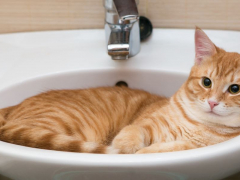
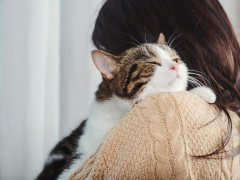

Thank you for your advise
You’re welcome!
hI I THIK MY CAT HAS CATARACTS,SHE IS 18 YEARS OLD ,IS THIS TOO OLD FOR SURGERY PLEASE
You will need to have your cat examined prior to surgery. A vet will let you know, based on bloodwork and a physical, if she is healthy enough to undergo this operation. Wishing you both all the best!